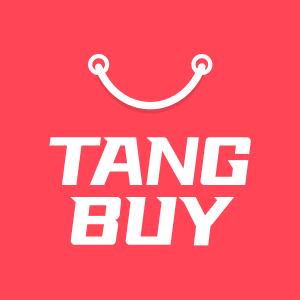The Ultimate Guide to Building a Product Brand for Dropshipping in 2025
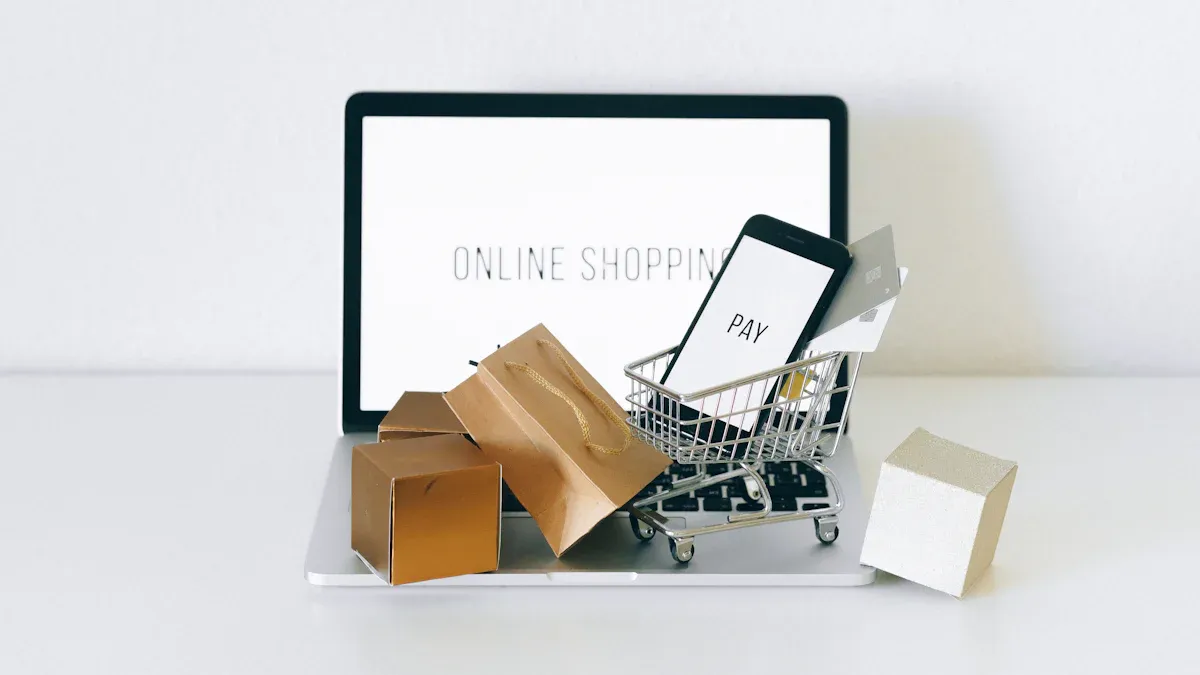
Want to brand a product for dropshipping in 2025? You face more competition than ever. In 2024, the global dropshipping market hit $365.7 billion and is set to reach $464.4 billion in 2025. Just look at these numbers:
Metric | 2024 Value | 2025 Projection |
|---|---|---|
Global Dropshipping Market Size | $365.7 billion | $464.4 billion |
Year-over-Year Growth | – | 27% |
You need a brand that stands out. Strong branding builds trust, lets you charge more, and keeps shoppers coming back. Ready to make your mark? Let’s get started.
Key Takeaways
Strong product branding helps your dropshipping shop get noticed. It also makes customers trust your shop more.
Learn about your audience so you can talk to them better. Make products that match what they want and like.
Use clear brand identity elements like a name people remember. Add a logo, colours, and the same style everywhere.
Build trust by giving good customer service and using reliable suppliers. Always be honest and show real reviews.
Good branding lets you ask for higher prices. It also makes customers want to come back again.
Tell your brand story with honesty and feelings. This helps people feel close to your brand and join your community.
Keep your brand the same everywhere, like on packaging and social media. This makes your shop easy to spot.
Ask for feedback often and test your ideas. This helps you make your brand better and stay ahead of others.
Product Branding Basics
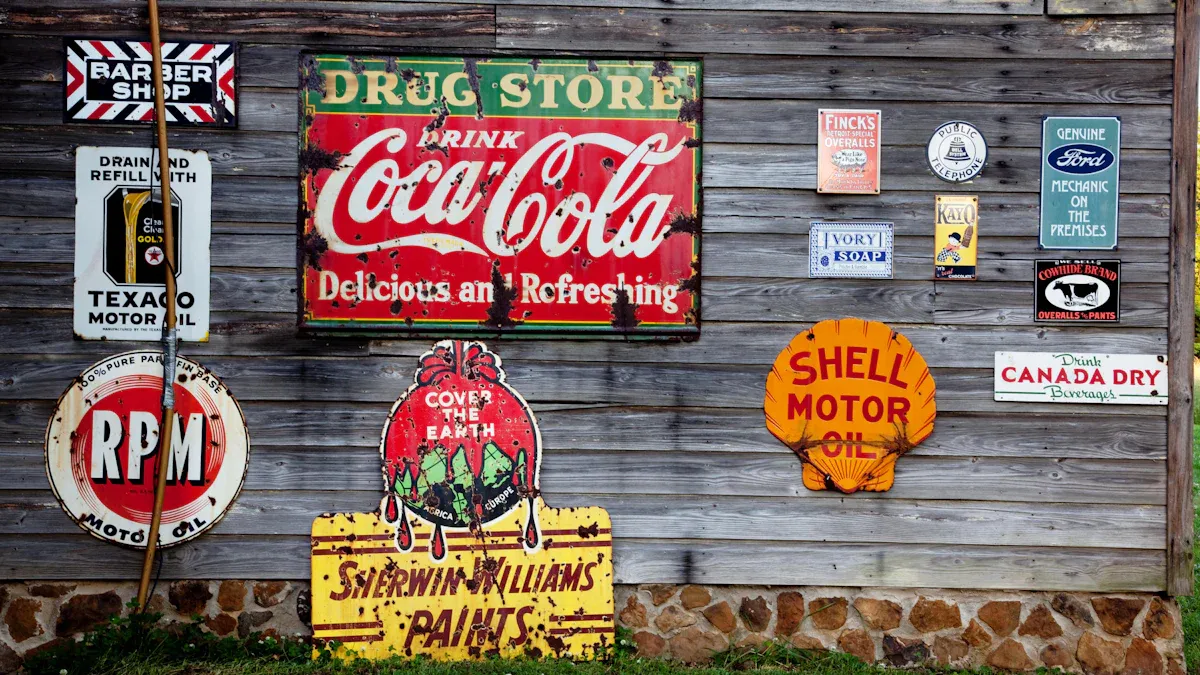
What Is Product Branding
Product branding means making your product easy to spot. You want people to remember it and trust it. This helps them pick your product instead of others. In dropshipping, it is more than just a name. You need a brand that stands out from many choices.
Here are the main parts that make up product branding in e-commerce and dropshipping:
Brand name and identity: Choose a name that is easy to remember and fits what your audience likes.
Visual branding: Use logos, colours, and designs that show your brand’s style.
Consistency across channels: Make sure your look and message stay the same on your website, social media, and emails.
Customer trust: Prove you are trustworthy and professional, so shoppers feel safe buying from you.
Market differentiation: Make your product different from others, so it does not get lost.
Premium pricing: Strong branding lets you charge more because people see extra value.
Branded products: Add your logo to your products and packaging.
Reliable suppliers: Work with partners who give good quality and help you keep your brand promise.
You should also think about your brand’s direction, personality, and vision. Protect your brand with trademarks and always try to give customers a great experience. When you know your “why”, you can build loyalty and help your brand grow.
Branding vs Corporate Branding
You might ask how product branding is not the same as corporate branding. They have different goals and ways of working, especially in dropshipping.
Aspect | Product Branding | Corporate Branding |
|---|---|---|
Strategy Focus | Highlights product features and benefits | Builds emotional connection and brand values |
Time Horizon | Short-term, focused on quick sales | Long-term, focused on loyalty and trust |
Key Activities | Reviews, sales, SEO, retargeting | Storytelling, community, customer service |
Outcomes | Immediate sales and feedback | Lasting loyalty and reputation |
Importance in Dropshipping | Critical for fast sales, but limited by trends | Essential for standing out and building a real business |
Example Benefit | Quick sales boosts | Brand loyalty and better customer experience |
In dropshipping, putting your brand on products and packaging helps you stand out. You build loyalty and make your shop easier to remember, even if your products are like others.
Why Branding Matters
Branding is not just about looking nice. It shapes how people feel about your shop and products. A strong brand builds trust and makes shoppers want to buy from you.
A clear brand identity and good customer service make people want to buy.
Good reviews and a strong brand image make people feel happy and sure when shopping.
People trust brands that look well-known and have a good reputation.
Trust makes shoppers feel safer online, so they are more likely to finish their purchase.
Tip: Work on building trust and a good image. This will help you get more customers and keep them coming back.
Branding lets you charge more, stand out, and build loyal customers. In dropshipping, your brand is your most important asset.
Benefits of Branding

Stand Out in the Market
You want people to remember your shop first. Many dropshipping shops sell the same things. Branding helps you be different from others. If you have a special look and way of talking, shoppers notice you. A good story about your brand makes people want to buy from you.
Branding is not just a logo or a cool name. It changes how people feel about your shop. If you share your story, people remember you more. Shoppers like brands that seem honest and real. When you talk about your journey or why you started, you connect with customers.
Branding helps you find your own place in a busy market. It builds trust and makes shoppers pick your shop.
You can also stand out by picking a small group to sell to. Some dropshipping shops sell only luxury fashion or eco-friendly things. This means less competition and more money for you. If you give something special, like custom packaging, people want to come back.
Branding helps you stand out in these ways:
Make your shop look and sound special.
Sell only special or high-quality things.
Build a group of fans around your shop.
Tell people about your story and what you care about.
Build Trust
Trust is very important in dropshipping. Shoppers want to feel safe when they buy. If your shop looks professional and keeps promises, people trust you. You build trust by being honest and talking clearly with customers.
Branded dropshipping lets you change products and packaging. This makes your shop seem more real and safe. When people see your logo, they know you care about quality. Good reviews, fast delivery, and easy returns help your shop look good.
You can build trust by:
Giving quick and kind customer service.
Keeping your message the same everywhere online.
Tip: Photos and reviews from real customers show new shoppers your shop is safe.
Premium Pricing
Branding does more than make your shop look nice. It lets you charge higher prices. When people think your brand is good, they pay more. This helps you earn more money and not fight over low prices.
Aspect | How Branding Helps You Charge More |
|---|---|
Differentiation | Special name, logo, and packaging stand out |
Customer Loyalty | Branded things make shoppers return |
Perceived Quality | People trust branded things more |
Market Research | |
Profit Margins | Branding lets you ask for higher prices |
Packaging & Promo | Custom packaging makes your brand known |
Think about brands like Allbirds. They sell shoes for more money because people trust them. If you build a strong brand, you can do this too. Branding shows shoppers why your things cost more, so your shop can grow faster.
Customer Loyalty
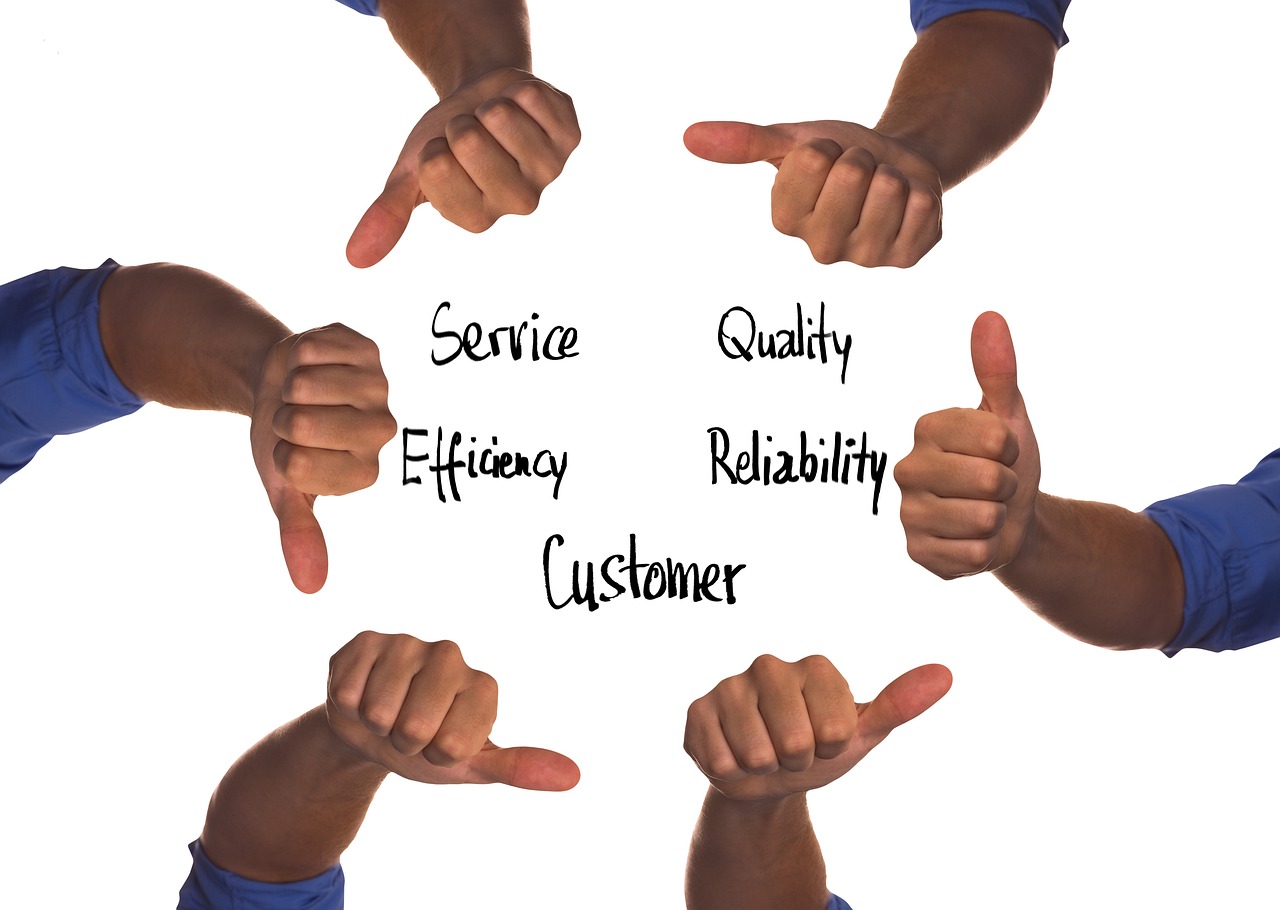
You want customers who come back again and again. That is what customer loyalty means. When you build a strong brand, you make shoppers feel good about choosing your shop. They remember you, trust you, and want to buy from you instead of someone else.
Branding does more than just make your shop look nice. It helps you stand out and gives people a reason to return. When you have a clear brand identity, shoppers know what to expect. They feel safe buying from you. This trust leads to loyalty. People like to stick with brands they know and trust, especially when they have had a good experience.
Loyal customers are gold. They spend more, tell their friends, and help your business grow.
Let’s look at how branding boosts loyalty in dropshipping:
You create a unique brand identity. This makes your shop different from others. Shoppers remember you and come back.
Loyalty programmes work better when you brand them. Use your colours, logo, and style. Give your programme a fun name. This makes it feel special and part of your brand.
Use the same language and tone in your emails, website, and social media. This makes customers feel like they know you.
Offer rewards for repeat purchases. Points, VIP clubs, and referral bonuses keep people coming back.
When you invest in branding, you increase the value people see in your shop. Customers often choose a brand they recognise over a plain or unknown one. If they have a good experience, they are more likely to buy again. This is true in dropshipping, just like in any other business.
A strong brand also means fewer returns and complaints. People trust your quality and service. They feel confident that you will deliver what you promise. This trust leads to more repeat sales and higher profits.
Here are some ways to build loyalty with your brand:
Give great customer service every time.
Share your story and values. Let people know what you stand for.
Make your packaging special. Add your logo or a thank you note.
Ask for feedback and listen to your customers.
Tip: Start a branded loyalty programme. Give points for every purchase, offer special deals to repeat buyers, and celebrate your best customers.
In the end, loyal customers are your best fans. They help you grow by coming back and telling others about your shop. Build your brand, and you will build loyalty that lasts.
Brand a Product: Key Steps

Know Your Audience
If you want to brand a product that people love, you must know who you are selling to. You cannot sell to everyone. You need to focus on the people who will care about your product the most. Start by thinking about your goals. What do you want to achieve with your brand? This will help you find the right audience.
Here’s how you can get to know your audience:
Set your marketing goals. Decide what you want your brand to achieve.
Gather information about your customers. Look at purchase history, run surveys, and check social media insights.
Find out key details like age, location, gender, hobbies, and what motivates them to buy.
Build buyer personas. These are profiles of your ideal customers.
Think about why people buy your product. Are they solving a problem, browsing, or buying a gift?
Use this information to create marketing messages that connect with your audience.
You can also test different groups with ads. Try running a few campaigns for a short time. See which group responds best. Stop the ones that do not work and focus on the ones that do. This helps you spend your money wisely and reach the people who matter most.
Tip: Check what your competitors are doing. Look at their social media and reviews. You can learn a lot about who their customers are and what they like.
When you brand a product, knowing your audience helps you stand out. You can speak directly to their needs and make your brand feel personal.
Market Research
Market research is your secret weapon when you want to brand a product. It helps you understand what people want, what is trending, and where you can fit in. You do not have to guess. You can use real data to make smart choices.
Here are some top tools and methods dropshipping brands use:
Tool / Method | What It Does |
|---|---|
Google Trends | Shows what people are searching for and what is popular right now. |
AliExpress Dropshipping Centre | Finds trending products and checks supplier quality. |
AutoDS Winning Products Hub | Lists top-selling products and gives insights about buyers. |
Sell The Trend, SaleSource, EcomHunt | Uses AI to spot winning products and analyse competitors. |
Social Media (Facebook, Instagram) | Helps you see what is popular and what people are talking about. |
Customer Surveys and Feedback | Lets you ask customers what they want and what they think. |
Competitor Analysis | Shows what other brands are doing well and where you can do better. |
Sales Performance Metrics | Tracks which products sell best and which ones make the most profit. |
Continuous Market Monitoring | Keeps you up to date with changes in trends and customer needs. |
You can use these tools to spot gaps in the market. Maybe you notice a trend before others do. Maybe you find a group of people who are not being served well. This is your chance to brand a product that fills that gap.
Note: Always listen to your customers. Their feedback can help you improve your product and your brand.
When you do good market research, you make better decisions. You pick the right products, set the right prices, and create a brand that people want to buy from.
Define Purpose & Values
If you want to build a brand that lasts, you need a clear purpose and strong values. People want to buy from brands that stand for something. They want to feel good about their choices. When you brand a product, your purpose and values set you apart from the rest.
Start by asking yourself why your brand exists. What do you care about? What change do you want to make? Your purpose is more than just making money. It is about the bigger picture.
Here’s how leading dropshipping brands do it:
Find your niche. Focus on a group of people who care about the same things you do.
Pick a brand name that is easy to remember and fits your audience.
Choose products and suppliers that match your values. For example, you might care about sustainability or ethical sourcing.
Share your values everywhere. Put them on your website, packaging, and social media.
Give great customer service and be honest. This builds trust and loyalty.
You can also show your values in your daily work. Use eco-friendly materials, support your community, or be open about how you run your business. Some brands even get official certifications to prove their commitment, like Fairtrade or B Corporation.
Method/Aspect | Description | Example |
|---|---|---|
Embedding Values in Operations | Make your values part of everything you do. | Use sustainable materials, ethical suppliers |
External Communication | Share your values with customers at every touchpoint. | Tell your story on your website and social media |
Official Certification | Get certified to show you meet high standards. | B Corp, Fairtrade, 1% for the Planet |
Customers remember brands that have a clear purpose and values. They feel proud to support you.
When you brand a product with purpose and values, you build trust. You attract loyal customers who believe in what you do. This is how you create a brand that stands out and grows over time.
Positioning
You want your brand to stand out in a crowded dropshipping market. Positioning is how you make your brand different from everyone else. It is about showing shoppers why they should pick you, not just any shop.
Here’s how you can position your brand for success:
Pick a niche. Focus on a small group of people with special interests. This helps you avoid too much competition and lets you charge higher prices.
Create a unique value proposition. Tell your customers what makes your brand special. Maybe your products are eco-friendly, or your service is super fast.
Use targeted marketing. Reach your audience where they spend time. Try social media, SEO, or work with influencers who share your values.
Rely on data and technology. Use tools to track what sells best, manage your stock, and set the right prices. This keeps your shop running smoothly.
Choose quality suppliers. Make sure your products arrive on time and look great. Good suppliers help you build trust and get repeat customers.
Go green. Use eco-friendly packaging or offer carbon-neutral shipping. Many shoppers love brands that care about the planet.
Watch the trends. Keep an eye on what is popular and what your competitors are doing. Change your approach if you see something new working.
Communicate clearly. Use the right channels to talk to your customers. Be honest and open, so people feel good about buying from you.
Tip: When you brand a product, always look for a gap in the market. If you solve a problem that others ignore, you will attract loyal customers.
A strong position helps you build a brand that people remember. You do not have to be the biggest shop. You just need to be the best choice for your audience.
Brand Personality
Brand personality is the human side of your business. It is how your brand would act, speak, and feel if it were a person. When you give your brand a personality, you make it easier for people to connect with you.
Here are some ways to build a brand personality that works:
Understand your audience. Know what they like, how they talk, and what matters to them.
Create a brand voice. Use words and a tone that match your audience. If your shoppers are young and fun, use friendly language and emojis. If they want something serious, keep it professional.
Tell your story. Share why you started your shop and what you care about. People love brands with a story they can believe in.
Be consistent. Use the same colours, fonts, and style everywhere—on your website, social media, and packaging.
Show your values. If you care about the environment or fair trade, let your customers know. This builds trust and loyalty.
Add personality to your product descriptions. Make them fun, honest, or even a bit cheeky if that fits your brand.
Stay authentic. Do not pretend to be something you are not. Shoppers can tell if you are faking it.
Note: A strong brand personality makes people want to come back. They remember you, trust you, and tell their friends about your shop.
You can use a table to help decide what kind of personality fits your brand:
Brand Personality Type | Example Traits | Good For... |
|---|---|---|
Friendly & Fun | Playful, casual, witty | Young shoppers, lifestyle |
Professional | Reliable, expert | Tech, business, health |
Eco-conscious | Caring, honest | Green products, sustainability |
Bold & Trendy | Confident, daring | Fashion, gadgets |
When you brand a product, your personality sets you apart. It helps you build a real connection with your customers. They will remember you for how you make them feel, not just what you sell.
Brand Identity
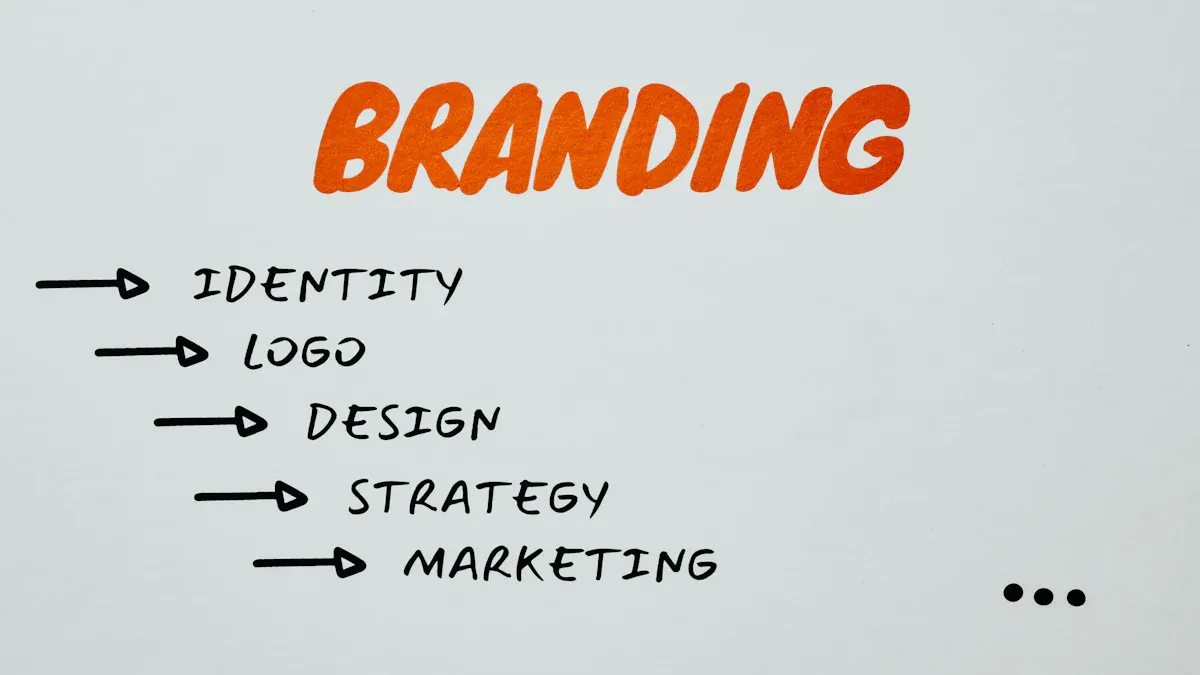
Name & Logo
Your brand name and logo are the first things people notice. They help shoppers remember you and decide if they trust your shop. A strong logo makes your dropshipping brand easy to spot and shapes how people see you. When you pick a name, keep it short, catchy, and easy to spell. Make sure it fits your products and the people you want to reach.
To create a name and logo that stand out, follow these steps:
Research your market. Look at what your audience likes and what your competitors do.
Decide what your brand stands for. Think about your mission and values.
Make a style guide. This keeps your logo, colours, and fonts the same everywhere.
Design a logo that is unique and easy to recognise. It should work on your website, social media, and packaging.
Pick the right logo type. You can use a wordmark, icon, or even a mascot.
Test your logo in different places. Make sure it looks good big or small.
Choose a name and logo that people will remember.
Remember, your brand may change as you grow. Stay open to feedback.
Your name and logo are not just pictures or words. They are the face of your brand. Make them count!
Colours & Visuals
Colours and visuals do more than make your shop look nice. They shape how people feel about your brand. Colour psychology shows that colours can change how shoppers think and act. For example, blue builds trust, red creates excitement, and green feels calm and healthy. Studies show that colour can affect up to 90% of a shopper’s first impression. If you use your brand colours everywhere, people remember you better.
When you choose colours, think about your message and your audience. Some colours mean different things in different cultures. For example, white means good luck in some places but sadness in others. Pick colours that fit your brand and check what they mean in your target market.
Visuals matter too. Use clear, high-quality images to show your products. Try 360-degree views or digital try-ons if you can. These help shoppers trust your shop because they can see what they are buying.
Use colours that match your brand’s mood.
Keep your design simple so shoppers focus on your products.
Make sure your visuals look good on all devices.
Consistent colours and visuals help people remember your brand and feel good about shopping with you.
Brand Voice
Your brand voice is how you talk to your customers. It shows your personality and helps people connect with you. If you sound friendly and honest, shoppers feel welcome. If you sound serious and expert, they trust your advice.
Here’s a quick guide to building a strong brand voice:
Element | What To Do | Example / Tip |
|---|---|---|
Know Your Audience | Find out what your customers like and how they speak. | Use words they use and care about their problems. |
Match Your Values | Make sure your voice fits your brand’s mission and values. | Be casual for fun brands, formal for expert brands. |
Stay Consistent | Use the same tone in emails, social posts, and your website. | Write a style guide for your team. |
Use the Right Fonts | Pick fonts that match your brand’s style and are easy to read. | Use one or two fonts everywhere. |
Update Regularly | Listen to feedback and change your voice if needed. | Check if your voice still fits your audience. |
Keep your brand voice the same everywhere. This builds trust and helps shoppers remember you.
Packaging
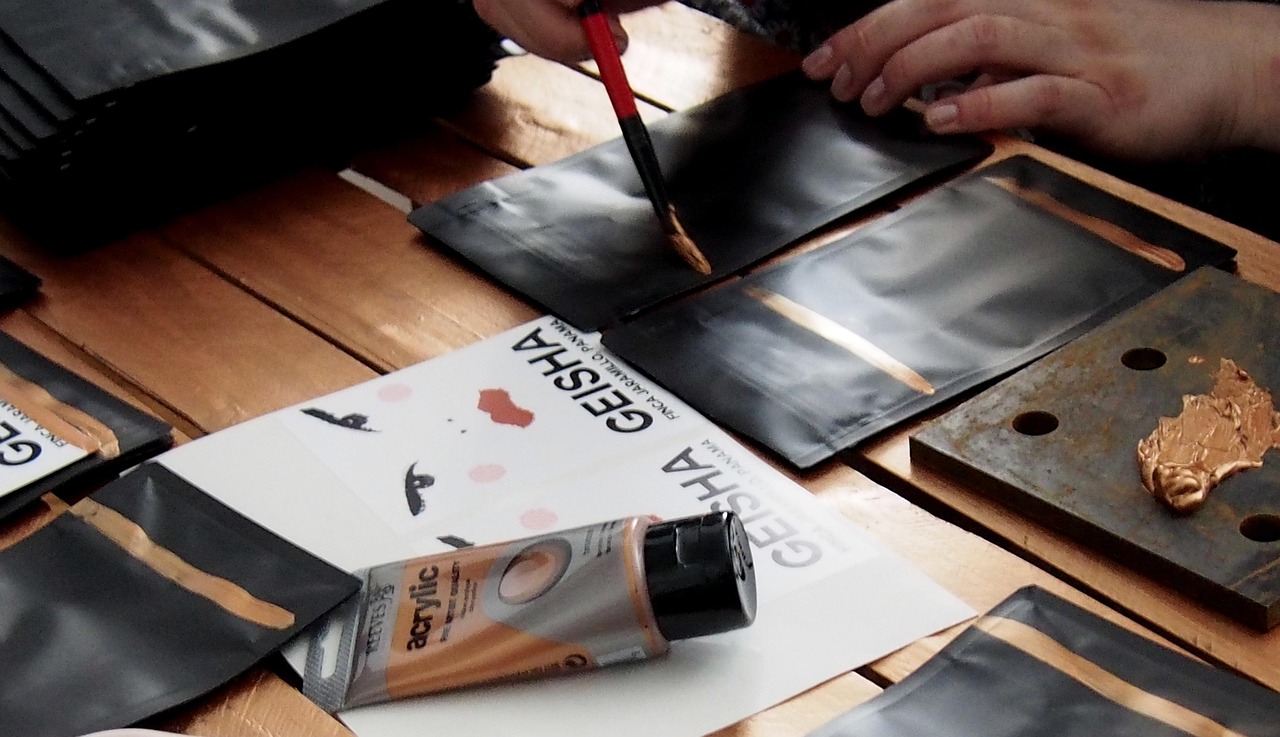
Packaging is not just a box or bag. It is the first thing customers see when they get their order. You want your packaging to look great and show your brand’s style. Good packaging can make a normal delivery feel special.
Custom packaging makes your brand look more professional. Your logo, colours, and design help people remember you. Nice packaging makes customers excited to open their order. Sometimes, they share photos or videos of unboxing online. This gives you free advertising and helps more people find your shop.
Here is how packaging can change your brand and customer experience:
Impact Aspect | Description | Example or Statistic |
|---|---|---|
Professional Brand Presence | Custom packaging makes your products look professional and strengthens brand recall. | Use of logos and colours creates a cohesive experience. |
Enhanced Brand Recognition | Memorable packaging helps customers remember your brand. | 72% of shoppers say packaging design influences their buying decisions. |
Improved Customer Experience | Personal touches like thank-you notes or QR codes make unboxing special. | Businesses see up to a 52% increase in repeat purchases with personalised packaging. |
Customer Loyalty | Thoughtful packaging builds trust and keeps customers coming back. | Retention rates can rise by 15-20% with branded, personal packaging. |
Sustainability | Eco-friendly packaging attracts green shoppers and supports your brand image. | Over 70% of people prefer brands that use sustainable packaging. |
Cost-Efficiency | Smart packaging saves money on shipping and reduces damage. | Lightweight, protective materials lower costs and prevent returns. |
Boosting Word-of-Mouth | Attractive packaging encourages customers to share their experience online. | Better packaging can boost loyalty by 30% and generate organic promotion. |
You can add small things to your packaging, like a thank-you card or a discount code. These little extras make customers feel special. They might buy from you again or tell friends about your shop.
If you care about the planet, use recyclable or biodegradable packaging. Many people want brands that use eco-friendly materials. Even if it costs a bit more, it shows you care about the environment. This can help you stand out and maybe charge higher prices.
Your packaging should match your brand’s look. Keep it simple and good quality. Try different ideas to see what works best. Good packaging keeps your products safe, makes customers happy, and helps your brand grow.
Brand Storytelling

Craft Your Story
Your brand story is more than just words on a page. It is the heart of your dropshipping business. You want people to feel something when they hear about your brand. Start by thinking about why you began your shop. Did you face a challenge? Did you want to solve a problem? Share this journey with your customers.
To make your story memorable, try these techniques:
Use video to show your journey. Pick music and images that match the mood. Uplifting music works well if you overcame a big challenge.
Show close-up shots of your products. Let people see the details. Use wide shots to set the scene and give context.
Share real stories from your customers. Testimonials and user photos build trust and make your brand feel real.
Always end your story with a clear next step. Invite people to visit your shop or try your product.
Keep your story simple. Avoid jargon and long words. Focus on what matters most to your audience.
Stay true to yourself. Share honest stories from your team or your own life. People connect with real experiences.
A good story helps people picture themselves using your product. It makes your brand easy to remember.
Emotional Connection
You want your customers to feel something special when they think of your brand. Emotional connection is the secret to building loyalty. When people see themselves in your story, they start to care about your brand.
Customers come back when they feel attached to your brand. They like brands that match their values or identity.
Sharing your founder’s story in welcome emails creates a strong first impression.
Personal touches, like thank-you notes or community groups, make people feel part of something bigger.
Brands like Sephora and Zappos show that emotional engagement leads to repeat business.
Automated emails with a personal touch help keep the connection alive.
When you build a community around your brand, you give customers a sense of belonging. This keeps them coming back.
Share Across Channels
You have many ways to share your brand story. Each channel helps you reach new people and build stronger connections. Here is a quick guide to the best places to tell your story:
Channel | What Works Best |
|---|---|
Social Media | Share user photos, behind-the-scenes videos, and run polls. Instagram and TikTok are great for younger shoppers. |
Email Marketing | Send welcome emails, product tips, and personal stories. Use these to build trust and loyalty. |
SEO Blogging | Write helpful posts and answer common questions. This brings new people to your shop. |
Influencer Partnerships | Work with influencers for reviews and giveaways. Micro-influencers often have loyal followers. |
Video Marketing | Post short videos on TikTok, YouTube, and Instagram Reels. Show your products in action. |
Keep your brand voice the same everywhere. Respond to comments, ask questions, and share real moments. This makes your brand feel alive and helps you turn viewers into loyal fans.
The more you share your story, the more people will remember your brand. Stay active, stay real, and watch your community grow.
Consistency
Unified Touchpoints
You want your brand to look the same everywhere. This is what unified touchpoints are about. When someone visits your website or social media, they should know it is you. Your logo, colours, and style must always match. This helps people trust your brand.
Here are some ways to keep your brand message the same:
Always use the same logo, colours, and design on your website and social media.
Tell your brand story in a way that fits your values and connects with your audience.
Make sure your emails, posts, and website all sound like your brand.
Share helpful content and talk with your followers on every platform.
Work with your dropshipping partners to keep your packaging and service matching your brand.
Write clear guides for your team and partners so everyone knows how to show your brand.
If your brand message is the same everywhere, people remember you. They feel more sure about buying from you.
Customer Experience
You want every customer to have a good time with your brand. A unified customer experience means shoppers get the same great service and support everywhere. This is important for building loyalty in dropshipping.
Omnichannel loyalty programmes let customers earn and use rewards on different platforms. This makes shopping with you easy and special.
When you use customer data from all channels, you can send offers that fit each shopper. This makes people feel important and brings them back.
A smooth experience means fewer problems and happier customers. People trust brands that make things simple.
Loyalty programmes with other brands can help you find new shoppers and grow your community.
Loyal customers are your best fans. They might be a smaller group, but they often bring in almost half your money. If you make their journey easy, they will come back again and again.
Reputation
Your reputation is what people say about you when you are not there. Being consistent helps you build a good name. If you always do what you promise, people start to trust you more.
What Builds Reputation | How It Helps Your Brand |
|---|---|
Consistent branding | Makes your shop easy to spot |
Reliable service | Builds trust and brings shoppers back |
Quality control | Stops mistakes and keeps customers happy |
Clear communication | Avoids confusion and shows you care |
Positive reviews | Attracts new shoppers and builds confidence |
You can protect your reputation by checking your products, training your team, and listening to feedback. If you make a mistake, fix it fast and be honest. People remember brands that care about their customers.
Keep your promises and stay true to your brand. Your reputation will get better every day.
Community Building

Social Media
You can turn your customers into a real community by using social media the right way. Start by giving your brand a clear identity. Show what you stand for and let your personality shine. People love brands that feel real and relatable.
Try these steps to build your community:
Share posts that teach, entertain, or ask questions. Polls, quizzes, and user photos work well.
Use Instagram Stories, Facebook Groups, TikTok, and even Reddit. Each platform has its own style, so mix things up.
Host live Q&A sessions or product launches. These events make people feel involved.
Reply to comments and messages quickly. Show your followers that you listen and care.
Run competitions and giveaways. Offer prizes that match your products to get people excited.
Work with influencers who share your values. They can help you reach new fans.
Keep your content fresh. Celebrate milestones and trends to keep your community buzzing.
Tip: Use a content calendar to post regularly. Consistency helps people remember your brand.
Reviews & Testimonials
Reviews and testimonials are gold for your dropshipping brand. Most shoppers trust reviews as much as advice from friends. When you show real feedback, you help new customers feel safe to buy from you.
Reviews build trust and give proof that your products are good.
Over 80% of people say reviews help them decide what to buy.
Good reviews boost your shop’s ranking on search engines, bringing in more visitors.
Customer photos and videos in reviews make your brand feel honest and real.
Responding to both good and bad reviews shows you care about your customers.
Put reviews where people can see them—on your product pages, home page, and even in your emails. Ask happy customers to share their thoughts. If you get a bad review, reply kindly and try to fix the problem. This shows everyone that you value feedback.
Note: Reviews are not just for show. They help you improve your products and service too.
Loyalty Programmes
Loyalty programmes keep your best customers coming back. You can reward shoppers in different ways. Here’s a quick look at what works best:
Programme Type | How It Works | Why It Works | Example |
|---|---|---|---|
Points-Based | Earn points for each purchase, redeem for rewards | Increases repeat buying by 38% | Starbucks Rewards |
Tiered | Unlock better rewards at higher levels | 74% engage more with tiered rewards | The North Face VIPeak |
Paid Membership | Pay for perks like free shipping or discounts | 54% join if benefits are valuable | Amazon Prime |
You can also add fun by letting customers “level up” for better rewards. Offer double-sided rewards for referrals to grow your community. Try personalising rewards based on what your customers like. Track how well your programme works and keep improving it.
Loyalty programmes turn shoppers into fans. They spend more, come back often, and tell their friends about your brand.
Test & Adapt
Gather Feedback
You cannot build a great dropshipping brand without listening to your customers. Feedback is your secret weapon. It helps you spot problems, improve your products, and keep your shoppers happy. Start by making it easy for people to share their thoughts. Use simple surveys, quick polls, or even a chatbot on your website. Tools like Zigpoll let you collect feedback in real time.
Here’s how you can gather feedback that really helps your brand grow:
Test your products yourself. Make sure your suppliers deliver good quality and fast shipping.
Try a soft launch. Sell to a small group first. Ask them for honest feedback through surveys or social media.
Use high-quality images and clear product descriptions. Ask customers if they find your listings helpful.
Be open about shipping times and return policies. This builds trust and encourages honest feedback.
Offer fast, friendly support. Listen to what customers say in chats and emails.
Run user interviews. Find out what motivates your customers and what problems they face.
Watch how people use your website. Usability tests show where shoppers get stuck.
Check reviews and social media for comments about your brand.
Send post-purchase surveys. Ask what went well and what could be better.
Tip: Always thank your customers for their feedback. Show them you care by making changes based on what they say.
A/B Testing
A/B testing helps you find out what works best for your brand. You show two versions of something—like a homepage image or a call-to-action button—to different groups of visitors. Then you see which one gets more clicks or sales. This way, you make decisions based on real data, not just guesses.
Here are some things you can test:
Try different hero images on your homepage. Use one with your best-selling product and another with a happy customer.
Change your main headline. Test which message makes people want to shop.
Move your “Buy Now” button or change its colour. See which version gets more clicks.
Test product images. Use lifestyle shots or close-ups to see what your audience likes.
Experiment with product descriptions. Try short and punchy versus detailed and informative.
A/B testing lets you keep improving your brand. You learn what your customers like and what makes them buy.
Note: Keep your tests simple. Change one thing at a time so you know what made the difference.
Evolve Your Brand
Your brand should never stand still. The best dropshipping brands keep changing and improving. Use the feedback and test results you collect to make smart changes. If customers want faster shipping, look for better suppliers. If people love your eco-friendly packaging, make it a bigger part of your story.
Here’s how you can keep your brand fresh:
Review feedback and test results every month.
Update your website and product listings based on what works best.
Try new ideas, like different packaging or loyalty rewards.
Watch your competitors. See what they do well and find ways to stand out.
Use analytics tools to track what shoppers do on your site.
Stay flexible. The market changes fast, and so do customer needs. If you keep testing and adapting, your brand will keep growing.

Branding Tips
Success Stories
You might wonder if small dropshipping brands can really stand out. The answer is yes! Many have started with just a simple idea and a clear brand message. Take Gymshark, for example. It began as a small fitness clothing shop. The founder focused on a bold logo, a strong story, and a community feel. Now, Gymshark is a global name.
Another great example is Inkbox. They sell temporary tattoos. Their brand stands out because they use bright visuals and share real customer stories. People love to post photos of their tattoos online. This helps Inkbox grow without spending much on ads.
What do these brands have in common? They know their audience. They use eye-catching colours and visuals. They tell a story that people want to share. You can do the same by focusing on what makes your shop special.
Remember: You do not need a huge budget to build a strong brand. Start with a clear message and let your personality shine.
Mistakes to Avoid
Branding mistakes can hold your shop back. Many dropshipping businesses make the same errors. Here are the most common ones and how you can avoid them:
Weak branding leads to poor customer engagement. People forget your shop if you do not stand out.
Inconsistent branding confuses shoppers. Use the same logo, colours, and voice everywhere.
A dull or messy website puts people off. Make a strong first impression in the first 7 seconds with clear visuals and easy navigation.
Skipping market research means you miss what your audience wants. Always check what your customers need and what your competitors do.
No brand story or value proposition makes your shop blend in. Tell people why your shop is different and why they should care.
You can avoid these mistakes by creating a brand story, designing a memorable logo, and keeping your message the same on every platform. Focus on building an emotional connection with your audience. This helps you stand out in a busy market.
Tip: Invest in a professional, mobile-friendly website with high-quality images. Your shop should look great and work well on any device.
Quick Wins
You do not need months to improve your brand. Here are some quick wins you can try today:
Update your logo and colours to match your brand’s personality.
Add a short, catchy brand story to your homepage.
Use high-quality product photos with your brand colours in the background.
Ask happy customers for reviews and share them on your website and social media.
Make sure your website looks good on phones and tablets.
Reply to comments and messages quickly to show you care.
Try a simple loyalty programme, like giving a discount on a second purchase.
A few small changes can make a big difference. Start with one or two tips and watch your brand grow.
Small steps lead to big results. Keep testing, keep learning, and your brand will get stronger every day.
You now know how to brand a product for dropshipping in 2025. Start by knowing your audience, define your purpose, and create a strong identity. Build trust with great packaging and a clear story. Test, adapt, and stay consistent. Strong branding helps you stand out, charge more, and keep customers coming back. Ready to build your brand? Take the first step today—your future customers are waiting! 🚀
FAQ
How do you choose a good brand name for dropshipping?
Pick a name that is short, easy to say, and fits your products. Check if the name is available as a website domain. Ask friends for feedback before you decide.
Can you brand products if you use AliExpress or similar suppliers?
Yes, you can. Many suppliers offer custom packaging or logo printing. Message them before you order. Always check samples first to see the quality.
What is the fastest way to make your dropshipping brand look professional?
Start with a clean logo and matching colours. Use high-quality product photos. Write clear product descriptions. Make sure your website works well on phones.
Do you need to trademark your dropshipping brand?
You do not have to, but it helps protect your name and logo. If you plan to grow your brand, think about registering a trademark in your country.
How can you build trust with new customers?
Show real reviews and customer photos. Reply quickly to questions. Offer clear return policies. Use secure payment methods. People trust brands that feel open and honest.
What should you do if someone copies your brand?
Stay calm. Gather proof like screenshots. Contact the person and ask them to stop. If they refuse, speak to the platform or get legal advice.
How often should you update your brand?
Review your brand every year. Update your look if trends change or if your audience grows. Listen to feedback and keep your brand fresh.
Can you build a strong brand with a small budget?
Absolutely! Focus on your story, use free design tools, and connect with your audience on social media. Small changes can make a big impact. Consistency matters more than money.

TangBuy: A Smarter Way to Dropship in 2025
If you're looking to stay competitive with dropshipping in 2025, speed and trend-awareness are key. TangBuy helps you stay ahead with real-time product trends, fast fulfilment, and factory-direct sourcing. With over 1 million ready-to-ship items, 24-hour order processing, and seamless Shopify integration, TangBuy makes it easier to test, scale, and succeed in today's fast-moving eCommerce landscape.
See Also
How To Successfully Start A Dropshipping Venture In 2025
Profitable Dropshipping Concepts To Explore In The Year 2025
Essential Advice For Achieving eBay Dropshipping Success In 2025
Starting Out With Shopify Without Dropshipping In 2025 Explained
Popular Men’s Fashion Items To Dropship Successfully In 2025
